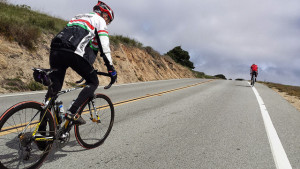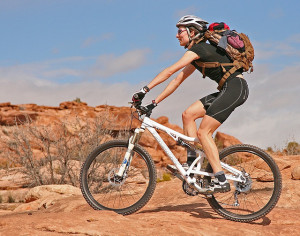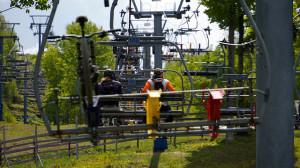Mountain biking versus road riding. No matter which side you might initially be on, there are pluses to both cycling options.
However heated the debate between biking on mountains and roads, nothing is absolute. What works for some doesn’t necessarily work for all. But you never know what could work for you until you try all your options.
Here are some important aspects of mountain biking and road riding to consider to help you decide if you want to try something new, and where to start.
Biking on roads
It’s universal
 Cycling on the road is a realistic first choice for all cyclists. It can feel like a smooth start for beginners who aren’t used to the rough terrain of mountain biking. Bike lanes improve road safety by designating one area to ride as cars whiz by.
Cycling on the road is a realistic first choice for all cyclists. It can feel like a smooth start for beginners who aren’t used to the rough terrain of mountain biking. Bike lanes improve road safety by designating one area to ride as cars whiz by.
As you become a more avid road cyclist, you’ll become familiar with less busy roads, so you can try to avoid cars altogether.
Quiet roads aren’t always easy to find, and they aren’t always empty. Be prepared to share the road with cars and other cyclists. Remember that you are still a vehicle on the road, no matter how many people you avoid. You always have to deal with the unexpected. Follow the rules of the road so everyone can be safe.
It’s simple
Roads are everywhere. You can plan ahead for a diverse ride, or you can just wheel your bike out of your garage, pick a road, and ride. Whatever approach you take, always make sure you are prepared and safe.
Riding on roads can also help you focus on improving one skill, such as speed or technique. Long, clear stretches of road means less braking or energy spent avoiding natural or man-made obstacles. You can instead spend your energy on riding, improving, and enjoying the fresh air.
Road bikes are made for speed so you can ride faster and longer than you could on a mountain bike.
Taking on mountain trails
It’s exciting
Many cyclists are avid mountain bikers, and for good reasons: it offers the challenge of fighting your way over rocks and mountains, the adventure of rough terrain, and the diverse beauty of nature’s many landscapes.
Mountain biking can be more dangerous because of its rough terrain, unexpected drops, and obstacles. But you still have control. Your bike is built for movement and impact. A mountain bike’s front and rear suspensions absorb shocks and keep you and your bike moving forward.
It’s secluded

On a mountain biking trail you don’t have to worry about the danger or nuisance of cars or commuting cyclists. You might encounter other riders, especially on popular trails, but the traffic is not like road traffic.
Instead of honking horns, there are chirping birds and insects. Instead of flashing lights and angry shouts, there are sunrises and friendly calls from other bikers. It’s a different world, removed from the everyday hustle and bustle.
It’s strengthening
Road cycling isn’t an impact sport, but bumping over rocks and terrain is a great way to give you dynamic exercise (much similar to the difference between road and trail-running).
Mountain biking can also improve your road riding skills. It can’t replace riding on the road completely, especially if you race. But mountain biking strengthens your core and upper body muscles, improves your pedaling technique, and makes your riding more powerful.
Trying a Cyclocross Bike
It’s a mix-up
If you want to try something besides road riding or mountain biking, consider a happy medium: a cyclocross bike.
Cross bikes can have front suspension, but sometimes its frame is rigid like a road bike. It also has skinnier tires, but it’s not solely for roads. A cross bike is similar to a road bike, but it can handle off-road trails much better than a road bike could. Still, it does not have the suspension and handling of a mountain bike, which excels on rocky and rugged trails and terrain.
It’s readily available
 While paths like the Murdock Trail are geared towards road bikes, they aren’t the only trails around. Cyclists also love the Porter Rockwell Trail and the Bonneville Shoreline Trail, where cross bikes sometimes come in handy.
While paths like the Murdock Trail are geared towards road bikes, they aren’t the only trails around. Cyclists also love the Porter Rockwell Trail and the Bonneville Shoreline Trail, where cross bikes sometimes come in handy.
The Bonneville Shoreline Trail’s many sections expand from Provo to Idaho. The Corner Canyon area also offers trails for cyclists and mountain bikers.
Ski resorts are also exciting cycling choices in the summer.
You can’t go wrong with any option. If you don’t like a particular trail or discipline, learn from it, pick another, and try again. Each cycling discipline can teach you something, change your routine, or at least spice it up if you branch out and try something new.
Images courtesy of Richard Masoner, Tim Brink, and Marcus Hansson via Flickr.
